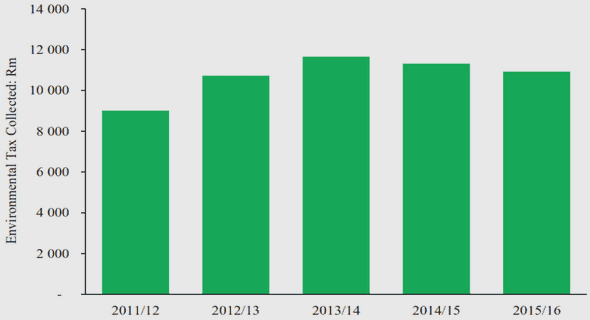(Downloads - 0)
For more info about our services contact : help@bestpfe.com
Table of contents
1 Scientific background
1.1 Appetite, satiety and the control of food intake
1.2 Peripheral signals involved in protein induced satiety
1.2.1 Sensory information from lingual detection
1.2.2 Pre-absorptive signals generated in the gastrointestinal tract
1.2.2.1 The stomach is sensitive to gastric distension
1.2.2.2 The vagus nerve builds the gut-brain axis
1.2.2.3 Chemoreceptors sense nutrients in the intestine and activate the vagus nerve
1.2.2.4 Peptide hormones act as humoral peripheral signals
1.2.3 Pre-absorptive signals specifically induced by protein ingestion
1.2.4 Post-absorptive peripheral signals
1.2.4.1 Direct sensing of dietary protein
1.2.4.2 Glucose-mediated sensing of dietary protein
1.2.4.3 Protein-induced thermogenesis can influence satiety
1.2.4.4 The role of hormones as peripheral adiposity signals
1.3 Central signalling of dietary protein
1.3.1 Short-term regulation of food intake: the dorsal vagal complex controls meal size
1.3.1.1 The blood-brain barrier
1.3.1.2 The area postrema mainly responding to humoral signals
1.3.1.3 The NTS receives signals from vagal afferents and the blood stream
1.3.2 Long-term regulation of energy balance: the hypothalamic area is responsible for maintaining body weight through meal initiation
1.3.2.1 The arcuate nucleus
1.3.2.2 The paraventricular nucleus
1.3.2.3 The ventromedial hypothalamus
1.3.2.4 Central neurotransmitters involved in hypothalamic projections
1.3.3 Integration of short-term satiation signals and long-term hunger signals in the DVC and the hypothalamus
1.4 Effect of a diet high in protein on body composition
1.5 Summary and objective of this thesis
2 Hepatic portal vein deafferentation has no effect on the satiating effect of a high protein diet in rats
2.1 Introduction
2.1.1 High protein diet altering food intake
2.1.2 Capsaicin for selective deafferentation
2.1.3 Aims of the study
2.2 Materials and Methods
2.2.1 Materials
2.2.2 Animals
2.2.3 Surgical procedures for selective hepatic vein deafferentation using capsaicin
2.2.4 Histological verification of selective deafferentation
2.2.4.1 Sampling of portal veins
2.2.4.2 Immunohistochemical analysis of CGRP reactivity
2.2.5 Diets and feeding procedures
2.2.6 Statistical analysis
2.3 Results
2.3.1 Hepatic portal vein deafferentation
2.3.2 Daily energy intake and body weight
2.4 Discussion
2.4.1 Deafferentation of the portal vein by a capsaicin solution
2.4.2 The effect of hepatic portal vein deafferentation on food intake suppression induced by a high protein diet
2.5 Conclusion and perspectives
2.6 Article: Protein, amino acids, vagus nerve signaling, and the brain. D Tomé, J Schwarz, N Darcel, G Fromentin
3 Central cartography of macronutrients’ internal sensibility
3.1 Integration of signals from intestinal nutrient sensing in the dorsal vagal complex
3.2 Article: Three-dimensional Macronutrient-associated Fos Expression Patterns in the Mouse Brainstem J Schwarz, J Burguet, O Rampin, G Fromentin, P Andrey, D Tomé, Y Maurin, N Darcel.
3.3 Additional methods: Calculation of density curves
3.4 Discussion, conclusion and perspectives
4 Modulation of body composition and the effect of gut peptides by a high protein diet
4.1 Introduction
4.1.1 Aims of studies
4.2 Material and Methods
4.2.1 Materials
4.2.2 Animals
4.2.3 Effect of a HP diet on body weight and food intake
4.2.4 Effect of a HP diet on body adipose tissue composition
4.2.4.1 Whole body MRI
4.2.4.2 1H MRS of the whole body, liver and muscle
4.2.5 Manganese Enhanced MRI of the appetite centres in the brain to measure alteration of the effect of oxyntomodulin by a high protein diet
4.2.5.1 Image analysis
4.2.6 Statistical analysis
4.3 Results
4.3.1 Effect of a HP diet on body weight and food intake
4.3.2 Effect of a HP diet on body composition
4.3.3 Alteration of the effect of oxyntomodulin by a high protein diet
4.4 Discussion
4.4.1 Effect of a HP diet on body weight and food intake
4.4.2 Effect of a HP diet on body composition
4.4.3 Alteration of the effect of oxyntomodulin by a high protein diet
4.5 Conclusion and perspectives
5 General conclusion and perspectives
6 Annex
6.1 Composition of the experimental diets1
6.2 Used R codes
6.2.1 Chapter 2
6.2.2 Chapter 3
6.2.3 Chapter 4
6.3 Principle of the magnetic resonance technique
6.3.1 1H MR Spectroscopy
6.3.2 Brain activity measured by Manganese enhanced MRI (MEMRI)
7 References


